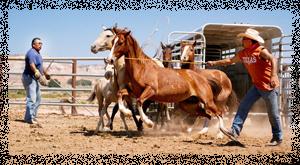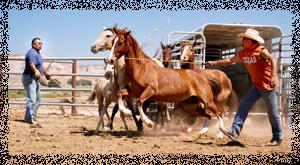Atop a mesa near Many Farms, Ariz., in the heart of Navajo territory, horses were stomping the ground one recent afternoon, as if trying to draw water from a pond that is now just cracked dirt.
By Fernando Santos

AZTEC, N.M. — The land is parched, the fields are withering and thousands of the nation’s horses are being left to fend for themselves on the dried range, abandoned by people who can no longer afford to feed them.
The Navajos have no tally on the number of feral horses on their land. A $2 million effort to count and round them up was vetoed by the tribe’s president because of the cost.
They have been dropping dead in the Navajo reservation in the Southwest, where neighbors are battling neighbors and livestock for water, an inherently scant resource on tribal land. They have been found stumbling through state parks in Missouri, in backyards and along country roads in Illinois, and among ranch herds in Texas where they do not belong.
Some are taken to rescue farms or foster homes — lifelines that are also buckling under the pressure of the nation’s worst drought in half a century, which has pushed the price of grain and hay needed to feed the animals beyond the reach of many families already struggling in the tight economy.
And still the drought rages on. The most recent federal assessment is that parts of at least 33 states, mostly in the West and the Midwest, are experiencing drought conditions that are severe or worse. It is affecting 87 percent of the land dedicated to growing corn, 63 percent of the land for hay and 72 percent of the land used for cattle.
With water tables falling, fields are crusting and cracking, creeks are running dry. Water holes first shrink, then vanish altogether. And dozens of wildfires are consuming forests and grassland across the West.
While precise figures are hard to come by, rough estimates from the Unwanted Horse Coalition, an alliance of equine organizations based in Washington, puts the number of unwanted horses — those given up on by their owners for whatever reasons — at 170,000 to 180,000 nationwide, said Ericka Caslin, the group’s director.
If interested in discussing equine law, you can contact Equine Law Attorney Adam Trenk @ atrenk@roselawgroup.com












